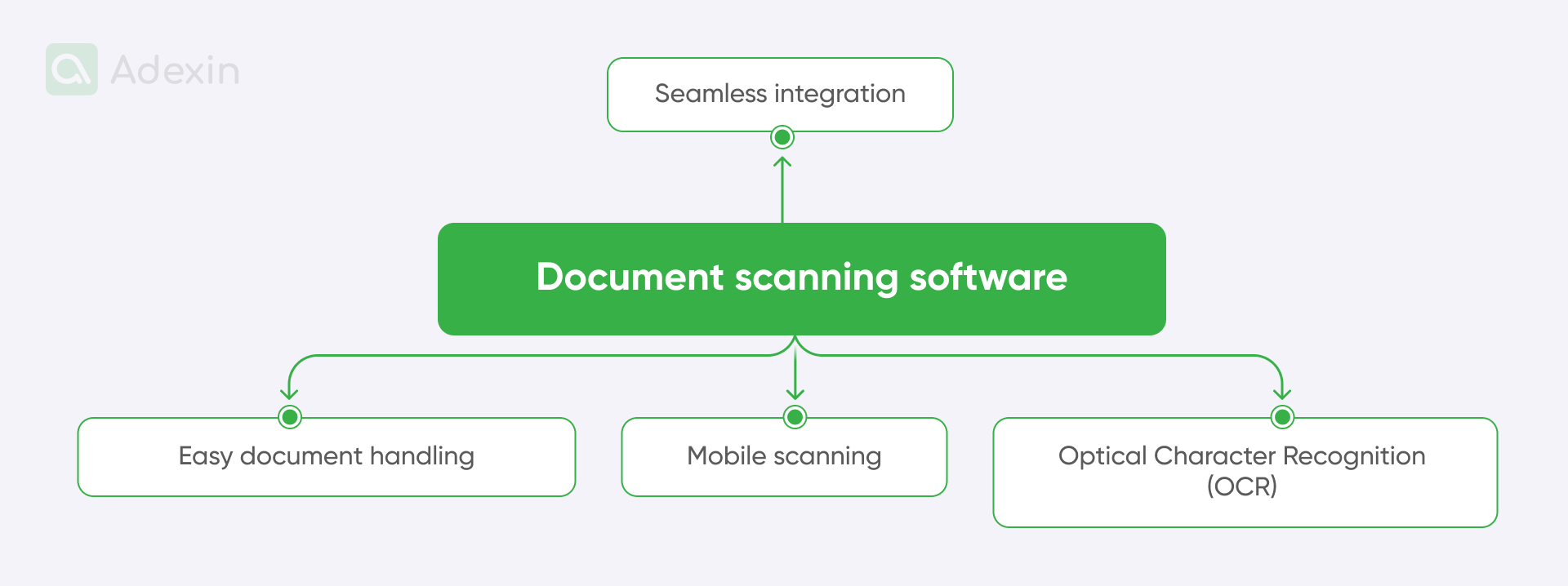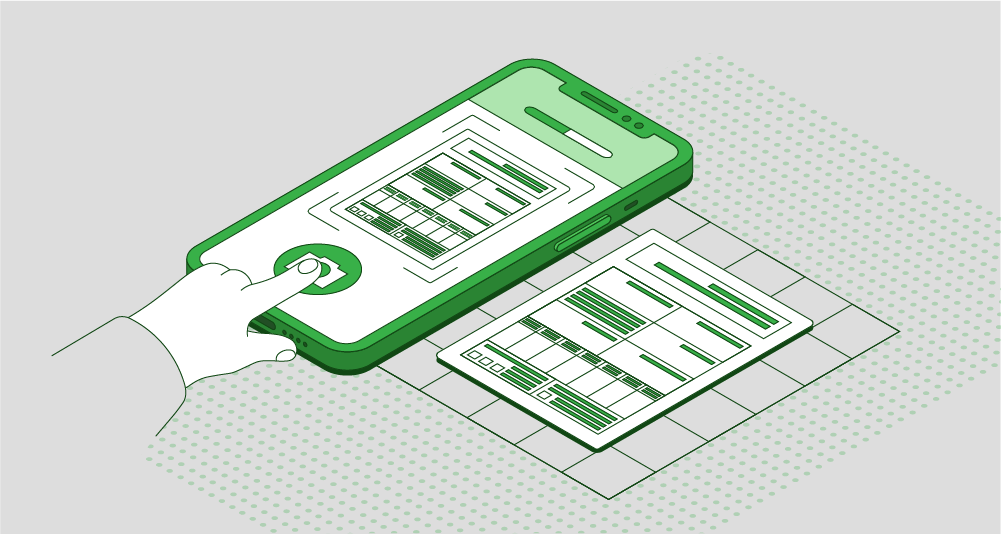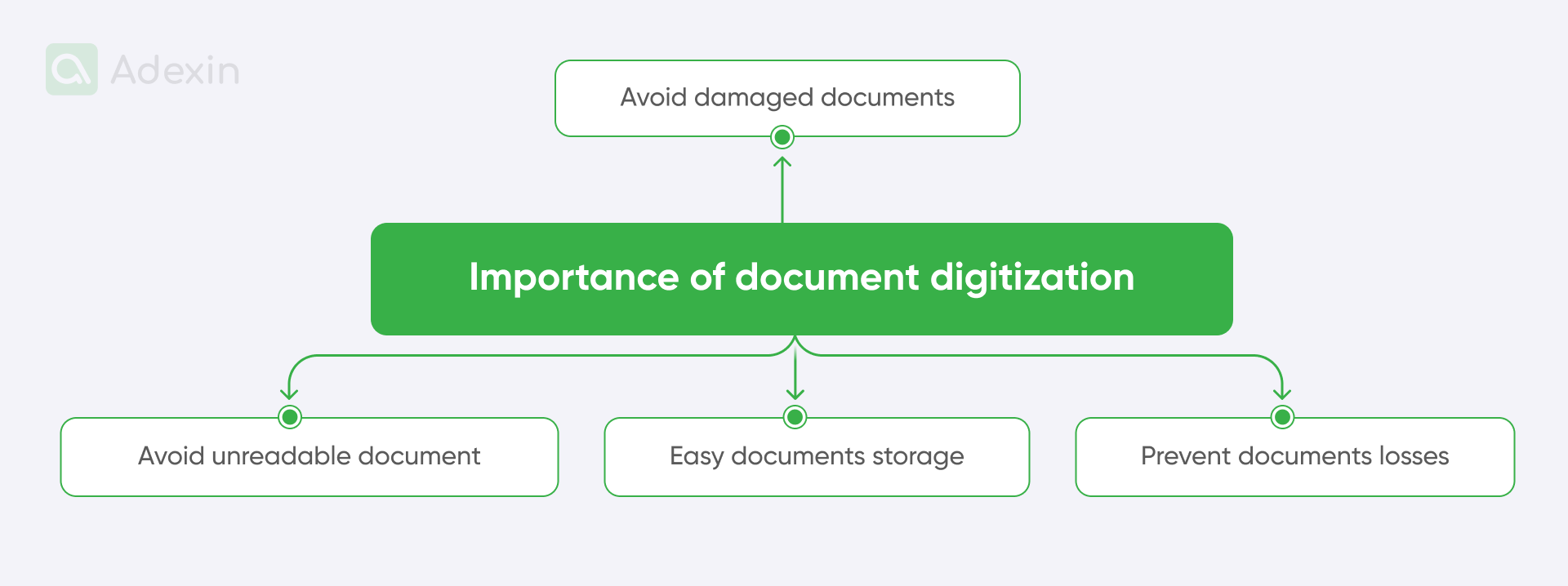Looking at the transport industry, digitizing documents is crucial due to the large amount of daily paperwork. Document scanning software provides time savings, accuracy and error reduction, among other benefits. Its features include easy integration, mobile scanning and, most importantly, OCR. Take a short journey with us on a document digitisation process that improves productivity and reduces paper clutter in the workplace. Let's take a closer look at a solution for the transport industry with the right document scanning software to ensure seamless digitisation.
What is the best way to digitize documents?
Companies struggle daily with a tremendous amount of paperwork documentation. The challenge is enormous for transportation companies that must record every operation at each crucial point in their business. They produce documents at nearly every journey step, from warehouses to customers.
Logistics administrators and truck drivers must deal with various forms of paper documents, including CRMs, PODs, and customs documents for international transportation.

The fact is that business operations are overwhelmed with paper documents. The solution is to digitalize the flow of documents in daily transportation operations. The best solution is to deploy software for document scanning in functions that allow:
Seamless integration
The easiest way to digitize documents is provided by the ultimate all-in-one solution designed for seamless integration with your business systems.
It means that you may need scanning software that is easy to connect with various streams with just one click, reducing the time you spend at your multifunction device (MFD). It should be able to transform documents into digital assets for various destinations. This user-friendly process can help employees in a quick return to daily tasks and not wasting time standing at the printer and waiting for several document copies.
Easy document handling
A process that helps you quickly scan documents directly to email accounts or preset personal and network folders with a single click.
With that said, you can wave away the hassle of searching through a cluttered "Transport Scanned Documents" folder on the SharePoint or other data source. That simply means less wasted time. And if you still like to send documents in old fashion through fax, you may still streamline docs in that way and secure that process.
Use the Optical Character Recognition (OCR) function
The best way to digitize documents is to use the power of OCR to turn countless scans into intelligent documents with text search and editing capabilities, simplifying information retrieval.
The one-click OCR function is ready for use in a variety of workplaces. Depending on your organization's preferences, you can process these smart files via cloud services or within your local IT infrastructure.
Mobile scanning
Nothing helps your business as much as digital document scanning from mobile devices. The best approach is providing truck drivers with a mobile application for scanning documents and direct data sharing across various systems and departments.
It still implicates system integration, easy document handling, and OCR functions. All that lets you digitize documents in a fast and user-friendly way.

Why is document digitization important?
The answer to this question is no secret to anyone working in corporate standards. It should be enough to give an example from the transportation industry to see a single document's flow. The document journey often starts from the Operations Support Group (OSG) department in logistics, which shares shipping details with carriers. Documents are sent via email or freight Software but are also duplicated in printed form.

Printed shipping documents are handed over to truck drivers, and several problems arise:
Damaged documents
Documents are often not handled properly and are often damaged on their way during the transport of goods.
It happens pretty often when paper-printed documents go from hand to hand. At the end of a journey, documents often need to be reprinted to be readable and stored due to legal requirements.
Unreadable document
Paper documents often require handwriting. Many companies use paper templates printed for shipping and stack them in piles in the office for future use.
Anyone can use handwritten documents, and this creates problems with poor handwriting, unreadable words, and typos. All that results in double work for everyone, leading to employee frustration and time loss.
Documents losses
The problem is similar to the one described as damaged documents. So, when they are damaged, they often need to be reprinted, but documents, due to manual handling, are often completely lost.
This means the company needs to contact the shipper's administrator and get the documents to be resent, etc. This often costs extra time, and employees require some troubleshooting. Bigger problems arise even when some employees from the OSG department are absent on that unlucky day.
Documents storage
In many countries, companies are obligated to store documents for several years. They have a repository in warehouses with a number of wooden pallets filled to the top with carton boxes full of paper documents.
All this takes up warehouse space and is also challenging to manage regarding document checks from a couple of years ago. This is mainly because companies never produce a digital version of documents.
The benefits of paper document digitization are obvious. However, as stated by McKinsey, companies still struggle with many obstacles on the path to digitization. All problems are about manual document processing to provide customers with process transparency and also implicate consumer satisfaction.
In the long run, companies should try to understand the document digitization process that helps eliminate as many paper processes as possible. [1]
There are many methods offered by custom software development for document management that can be deployed in your operations. These can have significant value for your overall operations.
Need help with document management systems development?
Learn how we can help you
Explore moreWhat are the different types of document digitization?
The first step to understanding the document digitization process is to increase awareness of market-available technology and approaches. It starts with various types of document digitization.

On-Demand digitization
Companies may ask for the digitalization of their existing paper document repository. It may take time, but it is helpful if a company wants to save space and increase document availability and accessibility across departments.
Day-to-Day digitization
Daily document digitization is performed by employees with access to mobile devices with embedded scanning software. It allows keeping all documents in digital form and seamless document exchange.
Document digitization is about converting text-based documents. It can be divided into three types of document processing based on the document format:
Converting text to digital form
Digitizing text involves scanning or manually entering printed or handwritten text into a digital format. Optical character recognition (OCR) software is often used to convert printed text into editable digital text.
Image-based digitization
Image-based digitization focuses on converting physical printed documents based on photography, illustrations, or other visual content into digital images. The process is commonly used in archiving artwork, historical transportation documents, and documents with visual elements.
Audio/Video digitization
The third type of document processing is audio/video digitization, but is less popular among logistics and transportation documents. They are most likely not used to reproduce or store these documents.
What is Document Scanning Software?
Document Scanning software enables companies to digitize documents. It can cover all company needs regarding On-Demand or Day-to-Day Digitization processes.
This type of Software uses scanners and imaging equipment that allow digitization, editing, and evaluation of images. Various document scanners support 2D object conversion into digital images, while optical scanners use light receptors in a CCD array to detect approximate changes in light. Scanning Software is essential for creating, digitizing, and editing images for storage on desktops, mobiles, EDM systems, and other electronic media.
Scanning Software and its role in digitizing transport documents are significant. It helps convert various transportation documents into a digital format.
What are the features of doc scanner software?
Features for software that can scan documents allow for various document processing methods. It can support the entire document flow across various departments using technology and the latest innovations.
Feature | Description |
|---|---|
Simple scan PDF to text embedded into Software
One of the advantages of using document scanning Software dedicated to transportation is that users can immediately shoot a photo of a shipping document (or any other) and directly receive a digital textual format on the screens of mobile devices. This solution is based on Optical Character Recognition (OCR) technology.
Using this solution daily, all users involved in document flow for transportation can benefit from it. All data from the scanned documents can be recognized and transmitted to the system without manually rewriting all the details.
Transport administrators are often forced to rewrite all shipping data manually, which takes time and can cause inconsistencies. Simply put, the lack of this makes life much harder for those involved in document flow and is responsible for transportation data quality.
Scan PDF editor - adjust data at any time
Using OCR and the function to scan PDF to text, users can also benefit from an editable file format. Document scanning software allows converting a scanned PDF document to a text format. This one can be adjusted at any time.
Users such as truck drivers and transport administrators can handle paper-printed documents, edit documents at any time, and reprint them in the nearest office once they spot errors. It is very helpful and can prevent document data discrepancies.
Support document flow with receipt scanning software
There is nothing more important in transportation than quick data exchange. All shippers and carriers want to be informed once their consignment reaches its destination for unloading. Very often, due to a narrow time window for unloading, accuracy for on-time delivery is highly important. Therefore, staying up to date about when delivery takes place is highly important.
There are receipt documents that can be scanned in transportation:
Proof of Delivery (POD) – a shipping document that includes the required shipment number and confirmation about the delivery.
Cash Register Receipts – these are printed or, most likely, digital records of transactions made at a point of sale (POS) or cash register.
Handwritten Receipts – these are typical receipts that are manually written records of transactions, including data on printed receipts, such as the date, items, prices, etc.
Packing Slips – better known as printed receipts, such as the date, items, and prices, provide a detailed list of the items included in the shipment, quantities, and special instructions.
Carbon Copies – these are formats of documents that allow replicating single shipping documents at once in three formats for various stakeholders. They consist of multiple sheets of paper with a carbon sheet between them.
Here are some of the main features of receipt scanning software:
Tracking expenses and income (full expense management).
Accurate daily exchange rates for different countries.
Forward receipts from email directly to the app and share real-time data.
Digital storage for all business documents.
Receipts converted into human-verified.
Automatic categorization and organization of documents.
Works offline and allows fly-through files in offline mode.
The fastest way to capture, crop, and track receipts.
Automatic synchronization across departments.
Reviewing transactions in bulk.
Invoice scanning software
One of the most important documents in transportation is the invoice. This one is often treated as Proof of Delivery (POD)_ itself, as holding an invoice with the driver's sign on it means delivery took place.
Invoice scanning is a function that is embedded into document scanning software for transportation and is an absolute must. Here are some of the basic benefits of using it:
Time-saving: Scanning invoices is faster than printing, and storing is much easier and more accessible, saving paper documents.
Greater accuracy: Invoice scanning ensures accurate financial calculations without so-called guesswork.
Fewer errors: Automation reduces data entry errors and ensures 100% accuracy without discrepancies.
Increased productivity: Invoice scanning software usually reduces manual paperwork by over 90%.
Cost-saving - the invoice scanning function built into the document scanning software reduces expenses on paper used for printing.
Are you in search of a reliable tech partner?
Adexin can help with advanced logistics solutions
Contact usFinal thoughts
Scanning document software is an important tool in the everyday operations of the transportation industry. Scanning multi-page documents has never been easier by using dedicated Software.
Average expenses on paper in a transportation company can reach up to several thousand dollars per quarter. There are also environmental considerations to maintain sustainability in the organization. The fact is that reducing paperwork in transportation with document scanning software can help protect the environment and support substantial Return on Investment (ROI).
Adexin supports the transportation industry with dedicated document scanning software. We have already implemented a document management solution, providing a full shipping document management platform. We can provide a similar software with components as a document scanning function. This will enable you to streamline the operation and handling of transportation in your company. Contact us today, and let's look at your business needs.
References:
[1] Retrieved from: https://www.mckinsey.com/industries/healthcare/our-insights/best-in-class-digital-document-processing-a-payer-perspective

